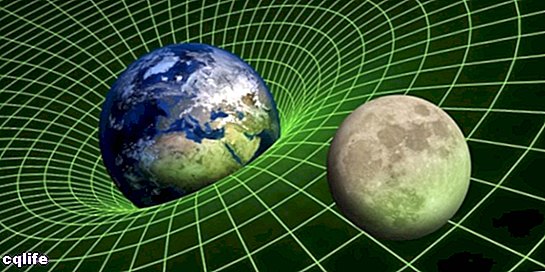- What is a force?
- Force characteristics
- Types of force
- Force units
- How is force measured?
- Examples of strength
- Force and motion
- Force of gravity
- Intermolecular forces
We explain what a force is for physics, its characteristics and its types according to each theory. Also, how it is measured and various examples.

What is a force?
In technical terms, a force is a quantity capable of modifying the quantity ofmovement or the given shape of a body or a particle. It should not be confused with the concepts of effort orEnergy.
Commonly, the concept of force is explained in terms of the mechanics classical established by the Isaac Newton principles (1642-1727), known as the Laws of the Movement and published in 1687 in their Principia Mathematica.
According to classical mechanics, the force that affects a body is responsible for changes in its state of motion, such as its rectilinear trajectory and its displacement uniform, and to print a acceleration (or slowdown). Furthermore, any force acting on a body generates an identical force, but in the opposite direction.
We normally speak of force in our daily lives, without necessarily using this word as the physical. Force is studied by physics and according to it, four fundamental forces are recognized at the levelquantum: the gravitational force, the electromagnetic force, the strong nuclear force and the weak nuclear force.
In contrast, in Newtonian (or classical) mechanics, there are many other identifiable forces, such as friction force,Gravitational force, centripetal force, etc.
Force characteristics
A force can be thought of as a physical entity that describes the intensity of the interactions between objects, closely related to theEnergy.
For classical mechanics, every force is composed of a magnitude and a address, thereby denoting it with avector. This means that it is a vector quantity, not a scalar one.
Types of force

There are several types of force, depending on their nature and focus:
According to Newtonian mechanics:
- Strength offriction. It is the force that opposes the change of movement of the bodies, exerting a endurance to abandon the state of rest, or of movement, as we can perceive it when starting a heavy object when pushing it.
- Gravitational force. It is the force exerted by the mass of bodies on nearby objects, drawing them towards each other. This force becomes noticeable when all or some of the interacting objects are very massive. The example par excellence is the planet Earth and the objects andbeings that we live on its surface; there is a gravitational attractive force between them.
- Electromagnetic force It is the attractive and repulsive force that is generated by the interaction of electromagnetic fields.
You can also talk about:
- Contact force. It is the force that is exerted from direct physical contact between one body and another.
- Force at a distance. It is the force that can be exerted without any physical contact between the bodies.
According to relativistic or Einsteinian mechanics:
- Gravitational force. It is the force that appears to exist when massive objects bend the space–weather around them, forcing smaller objects to deviate their trajectories and approach them.
- Electromagnetic force It is the force that electromagnetic fields exert on the charged particles of the matter, following the expression of the Lorenz force.
According to quantum mechanics:
- Gravitational force. It is the force exerted by one masses on the other, being a weak force, in only one direction (attractive), but effective over long distances.
- Forceelectromagnetic. It is the force that affects electrically charged particles and the electromagnetic fields that they generate, being the force that allows molecular bonding. It is stronger than gravity and has two senses (attraction-repulsion).
- Strong nuclear force. It is the force that maintains the nuclei of the atoms stable, keeping togetherneutrons Yprotons. It is more intense than electromagnetic, but it has much less range.
- Weak nuclear force. It is the force responsible for radioactive decay, capable of carrying out changes in subatomic matter, with an even lesser scope than strong nuclear forces.
Force units
According to International system, force is measured in units called Newtons (N), in honor of the great British physicist. These units correspond to 100,000 dynes and are understood as the amount of force applied during one second to a mass of a kilogram, so that it acquires the speed of one meter per second. That is, that:
1 N = (1kg x 1m) / 1 s2
There are other units for other metric systems, which are equivalent, in Newtons, to:
- 1 kilogram-force or kilopond is equal to 9.81 N
- 1 pound-force equals 4.448222 N
How is force measured?

The dynamometer is the ideal device for force measurement. It is also used to calculate the weight of the objects. It was invented by Isaac Newton himself, using the stretching of a spring and the Hooke's law of elasticity, in a manner similar to a spring balance.
Modern versions of the dynamometer follow the same principle and have hooks or rings at the ends of their cylindrical body, inside which there is a spring or spiral that acts as a spring. At one of its ends the measurement force (in some cases it may even appear on a digital display).
Examples of strength
There are constantly examples of strength all around us. By exerting our muscular force on an object to lift it, we are defeating the force of gravity. If we push a massive body with the shoulder, like a refrigerator, we will not only have to overcome the gravity, but also the friction force that opposes the movement.
The same happens when we glue a refrigerator magnet, since the forcemagnetic It holds it in place, but if we bring it closer to another magnet through the same pole, instead, we will notice a slight repulsive force, which is another character of the same magnetic force.
Force and motion
Force and motion are strongly involved with each other. In the first place, because force is that which is capable of starting, stopping or modifying a movement.
For example, when a baseball crashes against the bat, the batter's force is printed on the second to deflect its trajectory (the same that the pitcher's force initially gave it, since the ball is normally at rest) and throw it away in the field.
Whenever there is a force on a body in it address upon displacement, there will be work done by that force. The work required for this movement to occur is equal to the energy required to move the body. Depending on the type of force and the type of movement, various mathematical formulas will be available to calculate them.
Force of gravity

The force of gravity is that attractive force that masses exert on the matter around them, with an intensity proportional to their mass and inversely proportional to the distance that separates them.
In fact, theSun it attracts our planet from a distance, with the same kind of force with which it attracts us, who live on its surface. Gravity can be overcome momentarily, as we do when jumping, but we will eventually succumb to it. Everything that goes up freely, has to come down.
Intermolecular forces
They are those that keepmolecules together, forming structures more complex and of greater mass, depending directly on the nature of the atoms involved. That is why they are also known as intermolecular bonds or atomic bonds. These forces can be of two types:Van der Waals forces or the Hydrogen Bridges.
